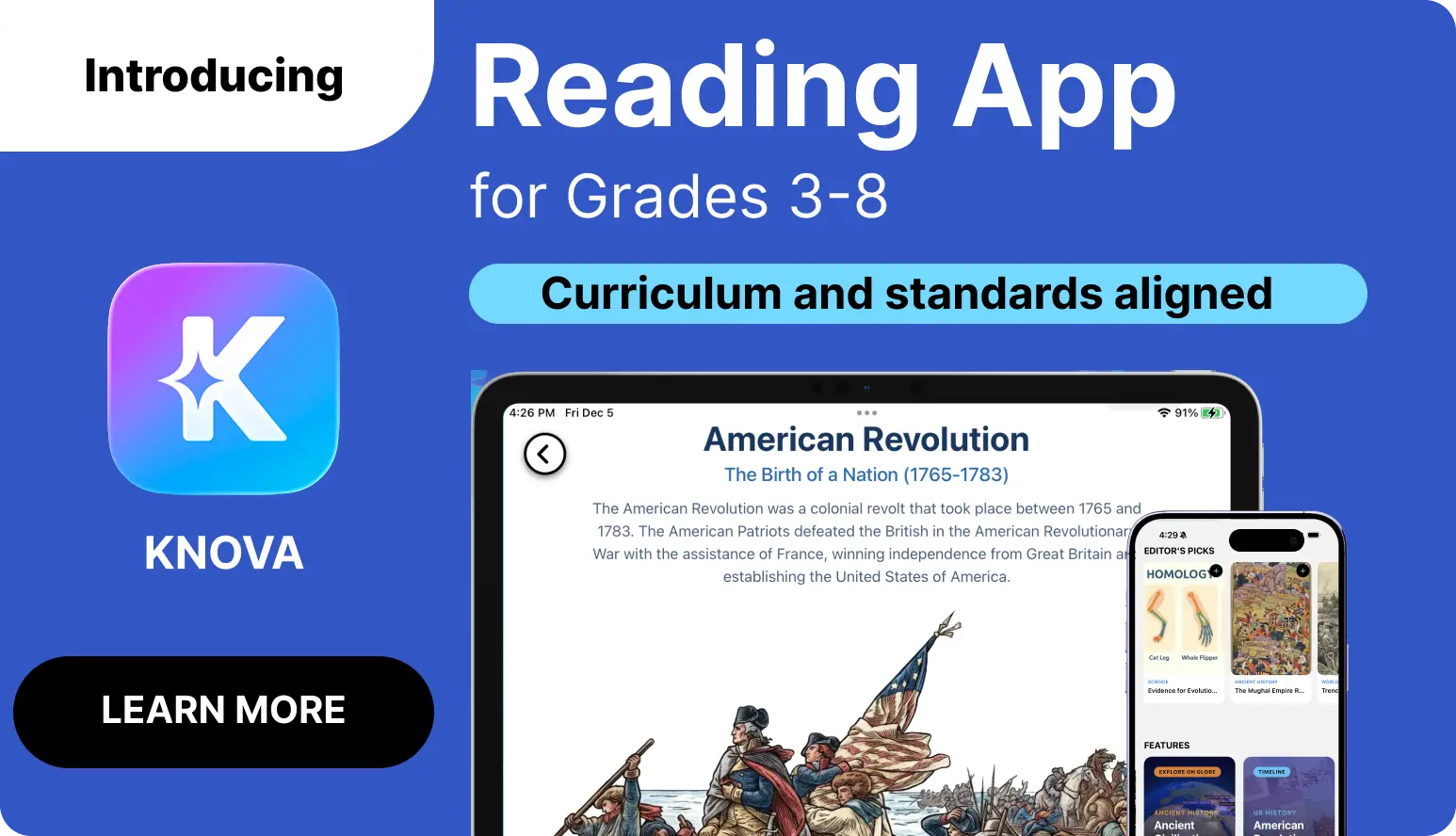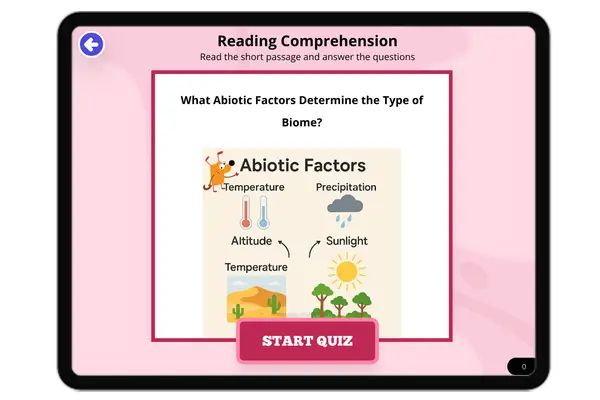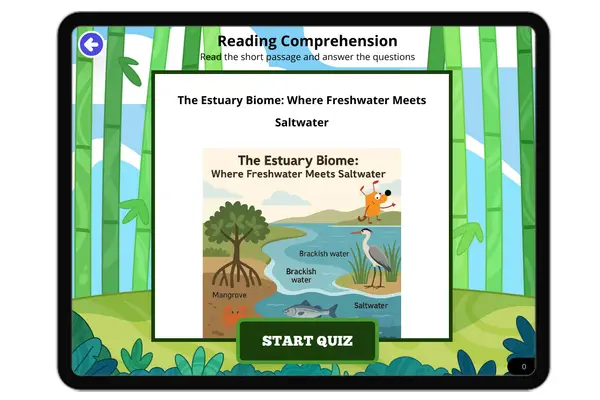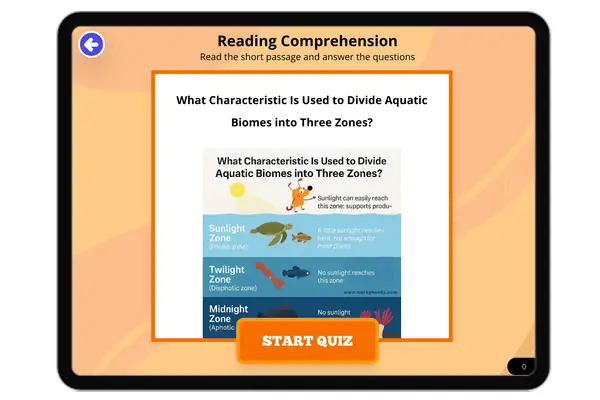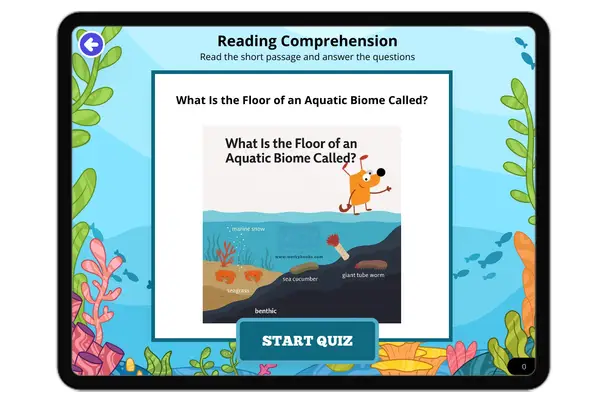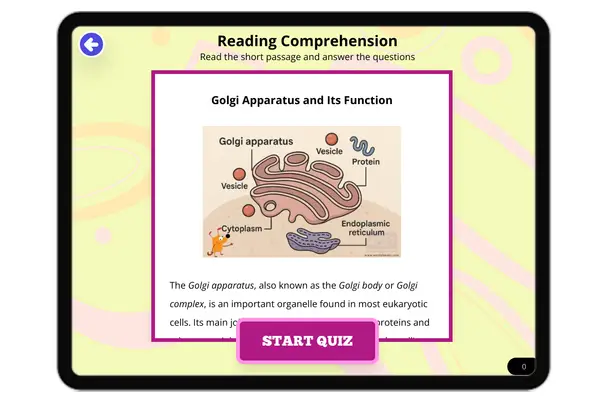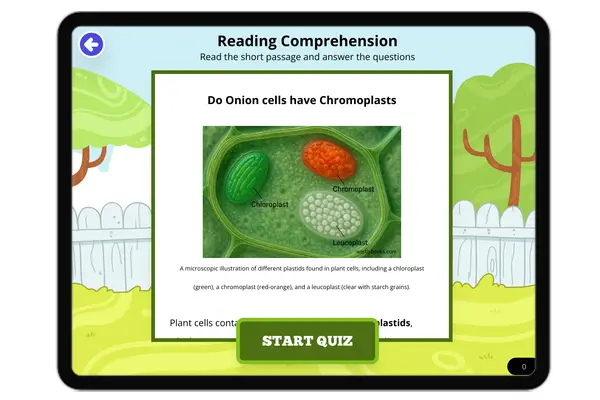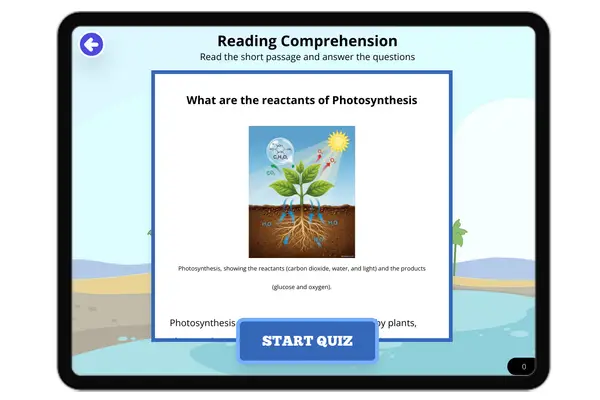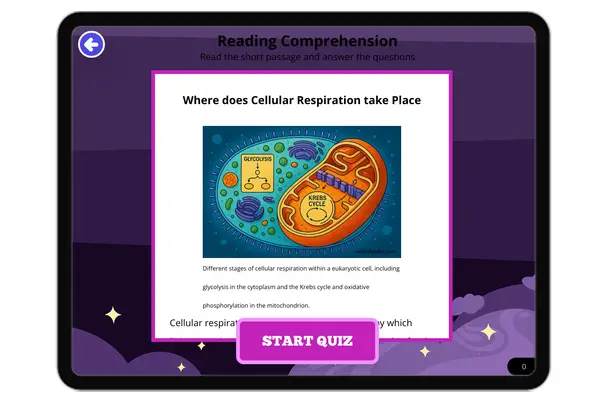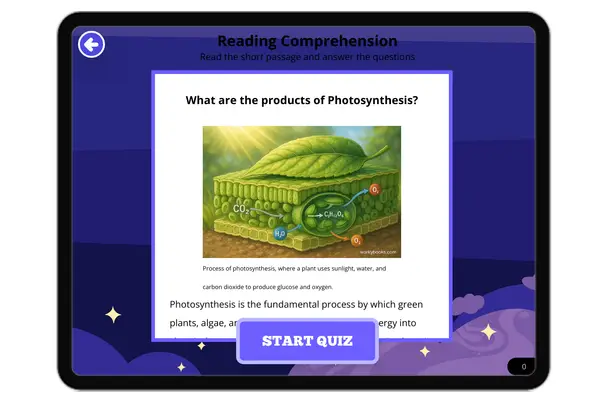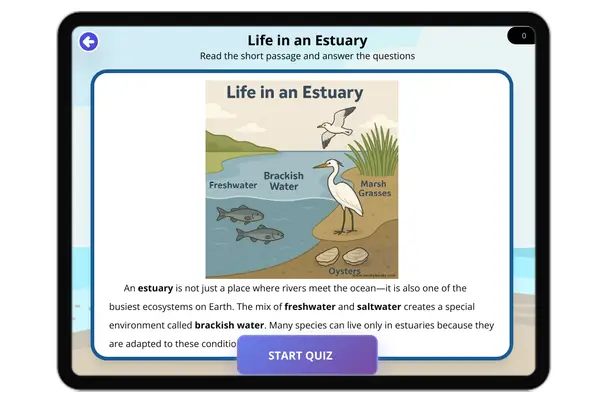Hungry Organisms
This educational passage addresses NGSS K-LS1-1 by comparing plant and animal survival needs through a garden story. Stu...
K-LS1-1RL.1.1
How Worms, Bees, and Ladybugs Help the Garden
This passage demonstrates how garden organisms form an interconnected system. Students learn how different creatures con...
Spider's Food Web
This passage supports NGSS K-ESS2-2 learning through observations of spider web construction. Students discover how smal...
ESS2-2RL.1.1
Pond Ecosystem
This passage explores how pond organisms form a functioning system. Students discover how different species contribute t...
Plant Responses to the Environment
In this 'Plant Responses to the Environment' word sort activity aligned with LS1.D, students explore how plants respond ...
Animal Senses and Survival Responses
In this 'Animal Senses and Survival Responses' word sort activity aligned with LS1.D, students investigate how animals u...
Plant Parts and Their Roles
In this 'Plant Parts and Their Roles' word sort activity aligned with LS1.A, students explore how various plant parts co...
Animal Body Parts and Their Functions
In this 'Animal Body Parts and Their Functions' word sort activity aligned with LS1.A, students learn about how differen...
Living Things Needs Word Sort
This foundational word sort helps young students understand what living things need to survive. Students classify 12 dif...
K-LS1-1
Animal Responses Word Sort
This classification activity helps students understand how animals respond differently to environmental information. Stu...
4-LS1-2
Animal Senses Word Sort
This engaging classification activity helps students understand how animals receive and process different types of senso...
4-LS1-2
Plant Parts Function Sort
This classification activity helps students understand how different plant structures contribute to survival. Students c...
4-LS1-1
Animal Structures Word Sort
This engaging classification activity helps students understand the different structures that make up animal bodies. Stu...
4-LS1-1
Plant Responses
This word sort activity engages grade 3 students in exploring how plants respond to environmental changes. Students cate...
What is a Mineral?
A mineral is a naturally occurring, inorganic solid with a specific chemical composition and crystal structure. Minerals...
RI.5.3RI.6.3RI.7.3
Difference Between a Rock and a Mineral
Rocks are mixtures of minerals, while minerals are naturally occurring, inorganic solids with a specific composition and...
RI.5.3RI.6.3RI.7.3
Why Are Pollinators Important?
This passage explores the critical ecological role of pollinators in maintaining ecosystem stability and supporting huma...
MS-LS2-4RI.6.3RI.7.3RI.8.8
Why Are Honeybees Important?
This passage explores the essential ecological and agricultural roles of honeybees, supporting NGSS standard MS-LS2-4 on...
MS-LS2-4RI.6.3RI.7.3RI.8.8
How Can We Help Pollinators and Stop Their Decline?
Pollinators including bees (Apis mellifera), butterflies (Lepidoptera), birds, and bats face severe threats with 40% of ...
MS-LS2-4RI.7.3RI.8.8RI.8.3
Arctic Fox Facts: What Do Arctic Foxes Eat?
This passage explores the Arctic fox's dietary adaptations aligned with NGSS standard MS-LS2-4 (Ecosystem Interactions)....
MS-LS2-4RI.6.3RI.7.3RI.8.8
The Narwhal: Arctic’s Unicorn of the Sea
This NGSS-aligned passage (MS-LS2-1) explores how narwhals survive in Arctic ecosystems. Students learn about specialize...
MS-LS2-1RI.6.3RI.7.3RI.8.8
The Fascinating Dumbo Octopus: Deep-Sea Wonder
Aligned to NGSS, this passage explores Dumbo octopus adaptations like ear-like fins for swimming at 3,000-13,000 ft dept...
MS-LS1-5RI.6.3RI.7.3RI.8.8
The Blue-Ringed Octopus
This NGSS aligned passage explores how the tiny blue-ringed octopus impacts its ecosystem through predator-prey relation...
MS-LS2-1RI.6.3RI.7.3RI.8.8
Tardigrades: Microscopic Superheroes
Aligned to MS-LS1-1, this passage examines how tardigrade cell structures (TDP proteins, DNA-repair enzymes) allow survi...
MS-LS2-1RI.6.3RI.7.3RI.8.8
Venus Flytrap Facts
This passage explains where Venus flytraps live in North Carolina bogs, how their snap traps work, and their unique way ...
MS-LS1-4RI.6.3RI.7.3RI.8.8
Pitcher Plants: Reproduction Facts
This passage describes tropical and North American pitcher plants, their liquid-filled traps, and how they get nutrients...
MS-LS1-4RI.6.3RI.7.3RI.8.8
What Abiotic Factors Determine the Type of Biome?
This NGSS-aligned middle school reading passage explains how abiotic factors—specifically temperature and precipitation—...
MS-LS1-5
The Estuary Biome: Where Freshwater Meets Saltwater
This middle school science reading passage explains the estuary biome, a unique ecosystem where freshwater and saltwater...
MS-LS1-2
What Characteristic Is Used to Divide Aquatic Biomes into Three Zones?
This NGSS-aligned reading passage explains how aquatic biomes such as oceans and lakes are divided into three zones base...
MS-LS1-3
What Is the Floor of an Aquatic Biome Called?
This NGSS-aligned science reading passage explains the benthic zone, which is the floor of an aquatic biome such as ocea...
MS-LS1-4
Golgi Apparatus and Its Function
This NGSS-aligned reading passage introduces middle school students to the structure and function of the Golgi apparatus...
MS-LS1-1
Do onion cells have chromoplasts
This engaging middle school science passage explores the different types of plastids found in plant cells: chloroplasts,...
What are the reactants of Photosynthesis
This comprehensive science passage, aligned with NGSS standards for middle school, provides a detailed yet accessible ex...
Where does Cellular Respiration take Place
"This science passage for middle school students (grades 6-8) explores the vital process of cellular respiration and whe...
What are the products of Photosynthesis?
"This NGSS-aligned reading passage for middle school students (grades 6-8) explores the vital process of photosynthesis ...



